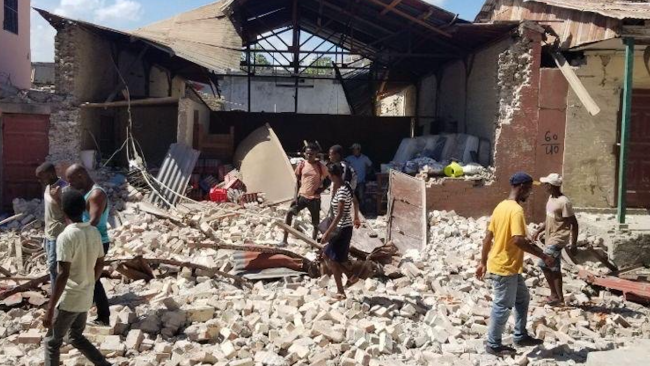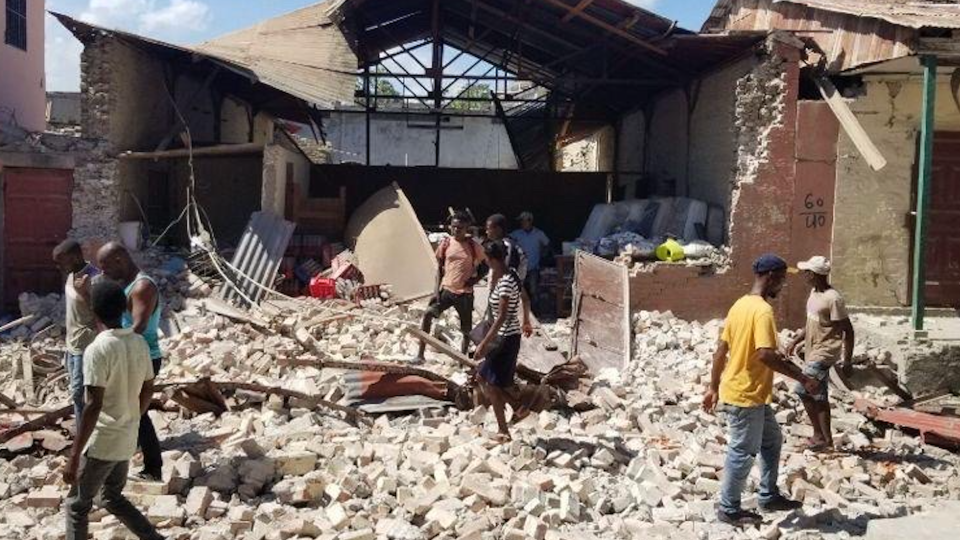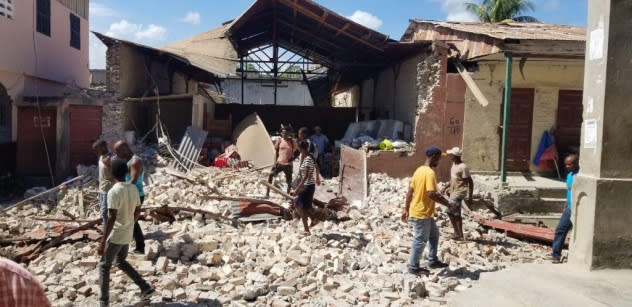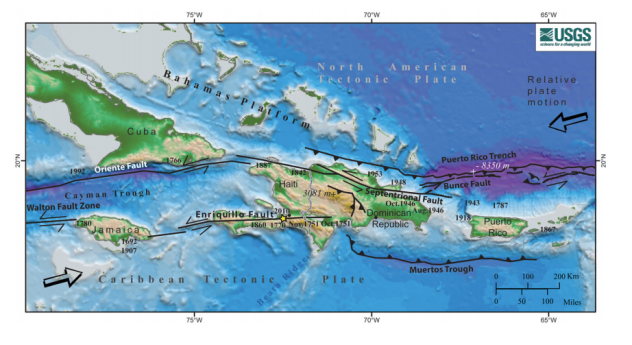Why Haiti is prone to catastrophic earthquakes
The 7.2-magnitude earthquake has left Haiti "on its knees," Prime Minister Ariel Henry said this week as the Civil Protection Agency raised the death toll above 2,000.
As the island nation works to recover from the calamitous earthquake that struck on Aug. 14, many recall a little more than a decade ago that a similarly powerful earthquake decimated the region. According to official estimates, 222,570 people were killed, 300,000 injured, 1.3 million displaced, 97,294 houses destroyed and 188,383 damaged in the Port-au-Prince area and in much of southern Haiti. It wasn't the first catastrophic quake to devastate the region. Major earthquakes have struck the country, which shares the island of Hispaniola with the Dominican Republic, since at least the 18th century.
Why is Haiti so prone to the risk of earthquakes? And why do earthquakes that hit seem to cause such widespread devastation? Geology is the chief factor in why Haiti is a veritable hotbed of seismic activity. The way the country has prioritized building to fortify against the impacts of weather threats is also a contributing factor.
"Hispaniola is at the intersection of the Caribbean plate with the North America plate," Gavin Hayes, a seismologist with the United States Geologic Survey (USGS), told AccuWeather in an interview. Hayes said the country sits at the intersection of two tectonic plates -- massive pieces of the Earth's crust -- that squeeze and slide against each other. That movement creates fault lines and two of them run across Hispaniola. The Enriquillo-Plantain Garden fault runs right through Haiti, including the densely populated capital city of Port-au-Prince.
Earthquakes are the result of the tectonic plates slowly moving against each other and creating friction. The plates move about two centimeters a year, or about half of the pace at which human fingernails grow.
But, Hayes explained to AccuWeather, the friction builds. "Over time, that just accumulates and accumulates and accumulates energy essentially that occasionally is released as earthquakes."
 |
Residents of Jérémie assess damage amid buildings reduced to rubble in the wake of the 7.2-magnitude earthquake that struck Haiti. Photo credit: Haiti Health Foundation. |
The U.S. Geological Survey says the Enriquillo-Plantain Garden fault likely caused the most recent earthquake in Haiti as well as the devastating earthquake in 2010 that struck highly populated Port-au-Prince, which contributed to the high death toll.
A series of calamitous earthquakes also occurred in the 1700s. According to NOAA, the Enriquillo-Plantain Garden fault zone is a "likely source of historical large earthquakes in 1860, 1770, 1761, 1751, 1684, 1673 and 1618."
The 1751 earthquake leveled Port-au-Prince and seriously damaged nearby towns. NOAA's National Centers for Environmental Information recounted the devastation. "Houses and factories were thrown down at St.-Marc, Lkogbne and Plaine du Cul-de-sac. Crevices formed and abundant springs of nauseous water broke forth. Great landslips occurred and the beds of the rivers changed direction. Even the strongest buildings crumbled."
The next major earthquake occurred just 19 years later. As UWI Disaster Risk notes, " Two-hundred deaths were recorded in the 1770 quake as buildings flattened in Port-au-Prince and Saint-Dominique. The relatively low death toll was attributed to a rumbling sound that preceded the Haiti earthquake, allowing people to leave buildings before shifts occurred." The 1770 quake also caused a tsunami that hit Haiti, spreading water more than four miles inland.
 |
Haiti sits between the North American and Caribbean plates that shift against each other, causing earthquakes along fault lines like the Enriquillo-Plantain Garden fault zone. Photo credit: U.S. Geological Survey. |
Seismic activity in a highly-populated area is problematic enough, but add to it the fact that many of the buildings in Haiti are designed to withstand hurricanes, not earthquakes, and that creates a recipe for disaster.
NPR reported that "due to the 1751 and 1770 earthquakes and minor quakes that occurred between them, local authorities started requiring building with wood and forbade building with masonry. In the years since, Haitians have focused on building homes to withstand the bigger threat in the neighborhood - hurricanes."
Structures made of concrete and cinderblock are more storm-resistant than timber or steel, according to researchers for the wind engineering research center at Texas Tech University. As a result, most homes in Haiti are now built with hurricanes in mind. Hayes said that while the buildings can survive strong winds, they're vulnerable when the ground shakes.
"Cinder blocks and unreinforced masonry homes or buildings don't withstand strong shaking and that's compounded by the fact that they're obviously very heavy structures so, when they fall down, they trap anyone that's inside of them underneath that rubble," Hayes said.
It's been said that "earthquakes don't kill people, buildings do," which is why the National Earthquake Hazards Reduction Program analyzes seismic hazards around the United States and urges changes in building codes to reinforce structures, especially those made of concrete, to make them more capable of withstanding earthquakes.
"The building moves a little bit independently of the ground itself and then the structures themselves are built to be reinforced against that type of shaking," Hayes explained.
While that type of construction is happening across America, the construction of more earthquake-resistant buildings remains a financial challenge in Haiti, which is considered the poorest nation in the Western Hemisphere. But Hayes says retrofitting buildings would ultimately be cheaper than the cost of recovery after earthquakes like this most recent one.
"It is expensive, but one has to balance the expense of doing that upfront versus the often larger expense of recovering after earthquakes like this," he said. "It's actually better to prepare to build buildings that won't fall down because it reduces the long-term costs."
Keep checking back on AccuWeather.com and stay tuned to the AccuWeather Network on DirecTV, Frontier, Spectrum, FuboTV, Philo, and Verizon Fios.




